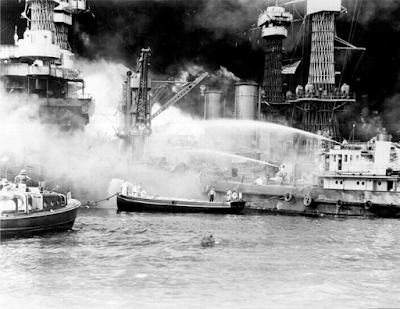This article is an
expansion from David Atwell and the editor at Today in Alternate History. It
may be found here.
Just as the soldiers of Heroditas approached the cell of
John the Baptist in the prison beneath the Machaerus fortified palace, a
terrible earthquake struck. John escaped, swimming across the nearby Dead Sea,
leaving the princess Salome shrieking with rage as her father could not fulfill
his promise of John’s head on a silver plate.
It was another turn in the literally epic life of John. Born
to an elderly mother by miracle, John was heralded by the angel Gabriel, just
as his relative Jesus of Nazareth would be the next year. As he grew, John spent
two years of penitence eating locusts and wild honey while dressing in camel
hair in the wilderness before becoming an itinerant preacher. He fulfilled the
prophecy of Isaiah (and others) as a new Elijah, a messenger to prepare the way
for the messiah. The arrival was confirmed when John baptized Jesus, and a dove
and a voice came from Heaven.
Although Jesus told John, “You bring me great joy,” and
their preaching included the criticism of religious leaders, the two’s
disciples bickered. John focused on baptizing and purifying the nation of
Israel, while Jesus sent his own disciples to baptize and reached out to
Samaritans and Gentiles. John initially had a much larger following, so large,
in fact, that Herod had him arrested. Languishing in prison for two years, John’s
faith is shaken, and he sends a disciple with a message to Jesus, “Are you he
who is to come, or shall we look for another?” Jesus replied, “Go
back and report to John what you hear and see: The blind receive sight, the lame walk, those who have leprosy
are cleansed, the deaf hear, the dead are raised, and the good news is
proclaimed to the poor. Blessed
is anyone who does not stumble on account of me.” Yet, Jesus told
the crowd, “Truly I tell you, among those born of
women there has not risen anyone greater than John the Baptist; yet whoever is
least in the kingdom of heaven is greater than he.”
After the earthquake, John was protected in Judea by
faithful followers and any pursuit amid the throngs swarming Jerusalem for the
Passover became impossible as Herod’s soldiers were unwelcome in Roman
territory without Pilate’s agreement. John baptized quietly, notably attending
Jesus’s triumphant entry the following Passover but famously absent from the
Last Supper, although it is said he witnessed the Crucifixion.
The Baptist re-emerged on the scene after Jesus’s death,
preaching his Johannine variant of the Word. Aside from the fundamental
differences of interpretation, his surviving disciples (some of whom had become
followers of Jesus and now returned to his own fold) received an unpleasant
reminder of the greater patience of their late master. The Romano-Jewish
historian Flavius Josephus would record that in his second ministry John
continued to practice his rituals corresponding strongly with baptism but on a
vastly increased scale. This culminated with the mass baptism in the Sea of
Galilee that would change the world forever.
Christendom would soon face a great schism over the question of Gentiles as former Pharisee Saul of Tarsus became the man to be known as Saint Paul and campaigned for universal missionary work. Initially, Simon-called-Peter served as a neutral leader between the factions, but John eventually broke away. While Paul’s ideals brought the Roman world into Christianity in the west, John turned eastward. Generations of his followers settled in in the marshes of lower Mesopotamia, forming up their own belief structure as Mandaeans with a focus on dualism: light and dark, clean and unclean, purity and sin.
Christendom would soon face a great schism over the question of Gentiles as former Pharisee Saul of Tarsus became the man to be known as Saint Paul and campaigned for universal missionary work. Initially, Simon-called-Peter served as a neutral leader between the factions, but John eventually broke away. While Paul’s ideals brought the Roman world into Christianity in the west, John turned eastward. Generations of his followers settled in in the marshes of lower Mesopotamia, forming up their own belief structure as Mandaeans with a focus on dualism: light and dark, clean and unclean, purity and sin.
Jerusalem was an infamous meeting ground for the two sects
and religious riots often broke out over the question of sprinkling and
submersion. Upon the arrival of Islam, there was sudden common ground, and an
alliance of the Byzantines and the Mandaeans prevented conquest of the city by
the Arab Caliphate in 638 AD. Since that day, Jerusalem has served as a tense
neutral ground, often seized by one side who is soon then pushed out by a brief
alliance of the others.
Author's Note from Today in Alternate History: in reality John began to doubt Jesus and he was not spared by God. His shrine was desecrated and many Churches, as recently as 2010, lay claim to parts of his remains. The descriptions of John vary in the Gospels and there are further differences in the Catholic Faith with some even believing that he never sinned at all.





